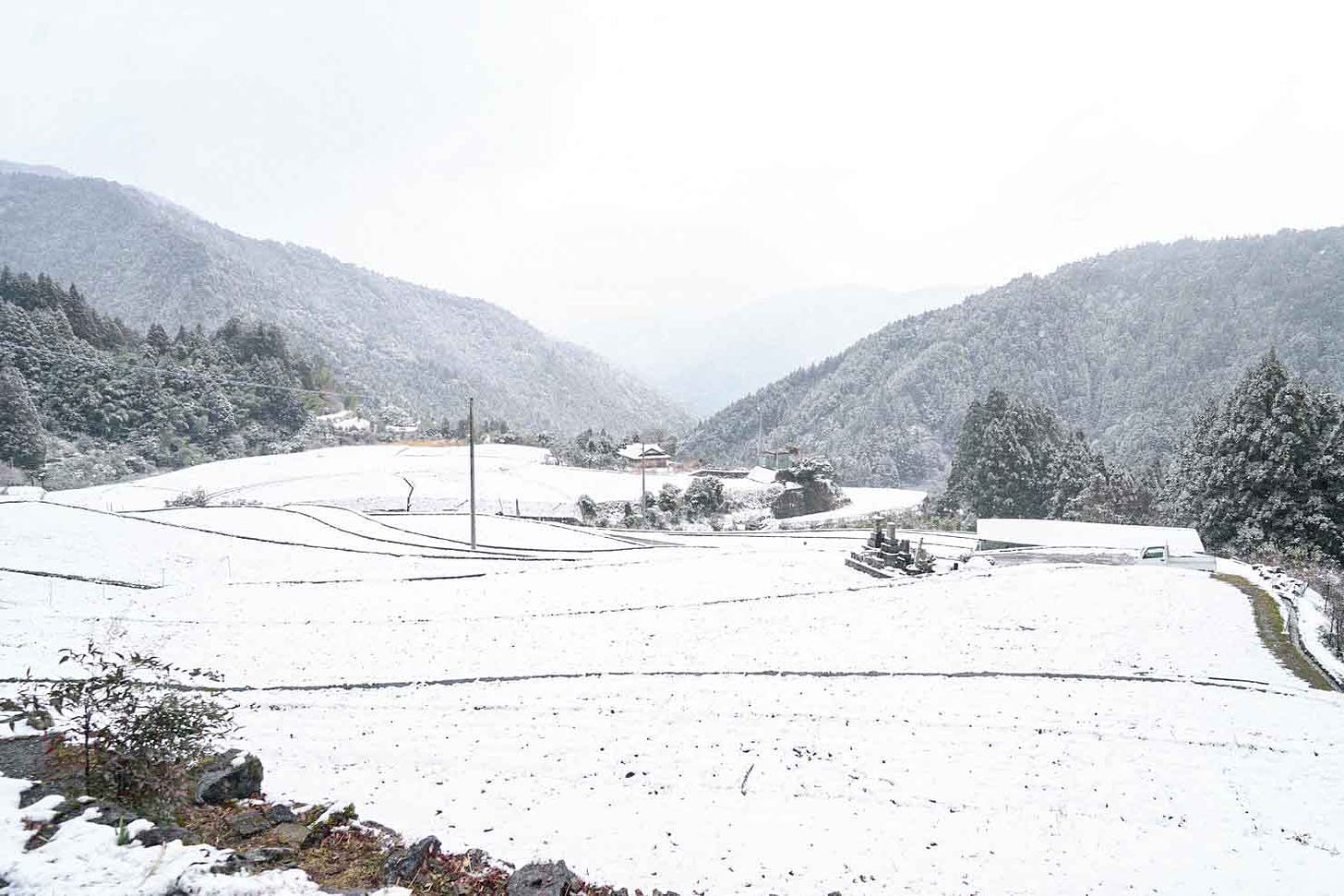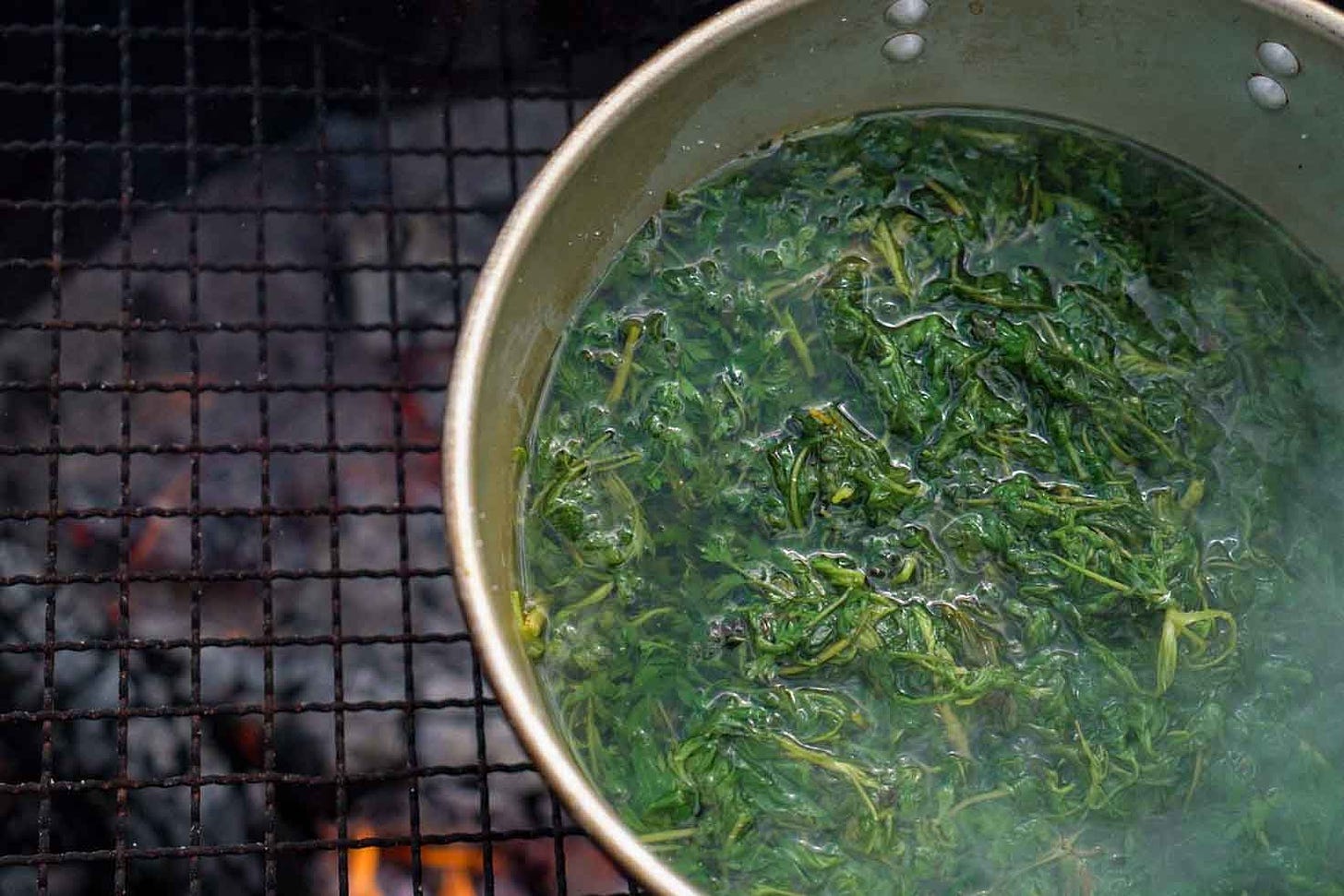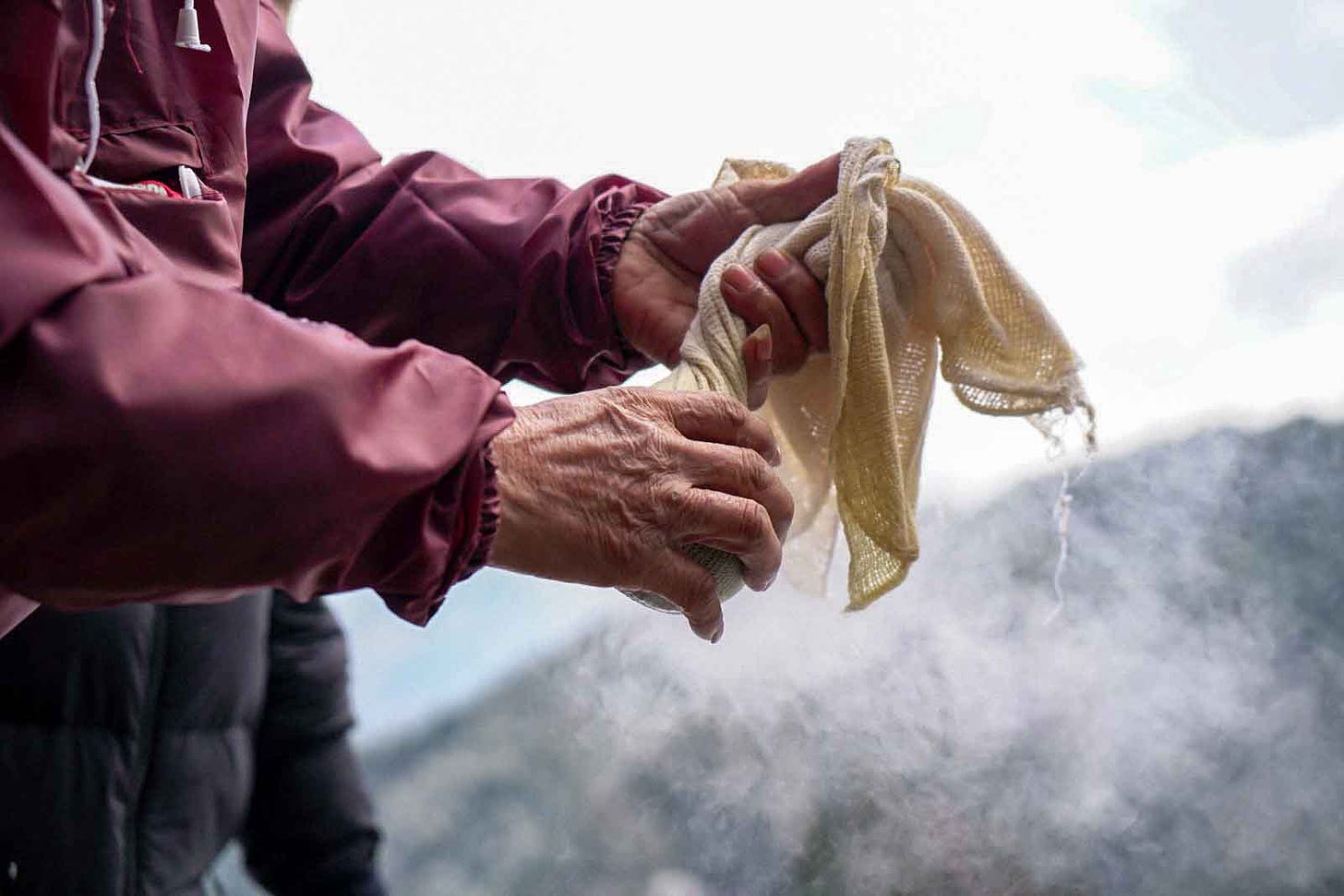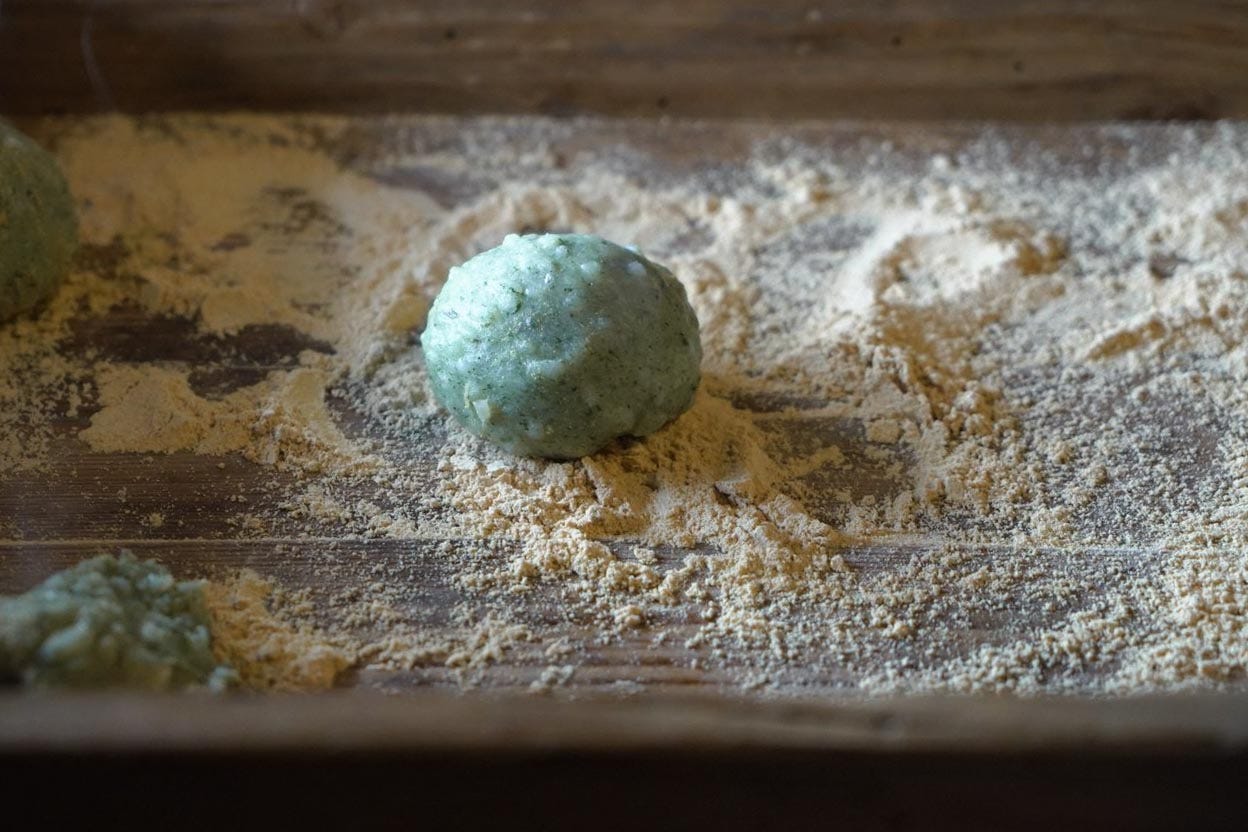We’re entering the Japanese micro-season of 草木萌動 known as the time when "grass and tree buds sprout". The days are getting longer, and although the air is still cool, it feels warm when the sun is out. The sounds of birds chirping have returned, and the stillness and quietness of winter are slowly fading away. I can feel the changes in the air, even if they are subtle. Last week, Kamikatsu experienced one final cold front, and it even snowed!
In the deepest part of Kamikatsu, in a hamlet known as Yaeiji, several local people organized an event to make mochi, Japanese rice cakes, made with locally grown glutinous rice known as mochigome and foraged vegetation.
The joy of foraging
Today, we were searching for Japanese mugwort, also known as yomogi. Yomogi is a common grass native to East Asia and is widely used in food and for its medicinal properties. In Japan, it is used as an ingredient in various sweets such as mochi, rice cakes, and dango, sweet dumplings.
Foraging, the gathering of wild plants, fruits, and fungi, is an ancient practice that I have learned to deeply appreciate since seeing its practice carried out by local people. Foraging makes amends for the disconnection caused by our modern food systems, which feel fragmented and remove the environmental and human connection.
Our ancestors lived in symbiosis with nature, foraging for food and medicine within arm's reach. If you know what you’re looking for, it’s impossible to look at a landscape in the same way. Little, free, wonders are hidden in plain sight.
When I pick some yomogi, I smell something earthy and almost medicinal. If rosemary and sage had a distant Asian cousin, it might be yomogi. It has tiny translucent hairs on the back of the leaf, which I’m told helps it ward off bugs and protect against frost. The taste is slightly bitter.
The plant is not only for eating but also has medicinal uses. A local told me that when she was young and she had a cut, her mother would pick some yomogi and place it in the palm of her hand. She would spit into her hand and rub the yomogi until it created a paste to be placed over the wound. When I hear these stories, I think of the ingenious ways people used what was readily available.
In traditional medicine, yomogi is believed to have many health benefits such as aiding digestion, alleviating menstrual discomfort, and treating skin conditions. It is also used in herbal teas and baths.
In Kamikatsu, it grows widely and wildly alongside riverbanks and is hidden among the stone walls. It seems to be an unfussy, unbothered plant that’s quite adaptable given how closely it also grows closely to cemented roadways.
Making yomogi mochi
On the morning of the event, we woke up to a light flurry of snow. The snow was wet to the touch but as we drove closer to the hamlet, the landscape changed from evergreen to white. Kamikatsu stretches over mountains and the altitude can vary from place to place.
Japanese rice cakes, known as mochi, are traditionally made by hand. No matter the recipe, every Japanese rice cake centers around the sticky ‘dough’ that is formed from steaming and pounding rice. To check the doneness of the rice, the local grandpa guiding us took one grain of steaming hot rice and pressed the grain between his thumb and finger. I’m told that when the grain flattens with the slightest of ease the rice is ready. I admire the hands that carry this kind of understanding.
The traditional pounding methods are the most exciting part of the mochi-making process. Two people are required: one to pound the rice with a wooden mallet, while the other turns the dough and adds water to prevent the rice from sticking. Nowadays, machines can make mochi without the need to turn and pound the dough by hand.
We take turns with the wooden mallet to pound the rice. A well-positioned strike of the mallet produces a satisfying, echoing sound, similar to a perfectly aligned high five. We repeat hundreds of times the dough is ready. The yomogi, boiled and bright green, turned paler and darker as it blended with the rice, resulting in a uniformly green dough.
We perform the final step of molding the mochi into small oval squares by gently rolling one hand over the other in slow and circular motions. We then sprinkle them with kinako, a roasted soybean powder; this adds a slightly nutty flavor and prevents the mochi from sticking. The irori is a traditional Japanese sunken hearth, and its embers slowly burn in the background. The charcoal crackles and wisps of smoke swirl around us, although it doesn't provide much warmth, it helps to create the perfect ambiance for enjoying the freshly made mochi.
Taking a bite of the mochi while it’s still warm is comforting in the cold. The yomogi doesn’t taste bitter, but earthly as it’s mixed well into the pounded rice. This feels like a gentle farewell to winter as we welcome warmer days on the horizon.
This experience of searching, finding, and identifying a plant has me all buzzed. Foraging is nature’s (free!!) treasure hunt—to observe all that is on the peripheries of our attention and use our senses and clues to discover the treasure. Though I only picked yomogi today, it’s made me realize that foraging is truly a way to deepen our connection to the natural world. I will continue this practice in the coming seasons as more life sprouts from the ground!
I hope that you also discover ways to appreciate the small wonders.
Have a beautiful Sunday!












This was a wonderful thing to wake up to on a Sunday morning in spring! My normal information consumption in the morning is news so it was refreshing to read something simple. Thanks, M
Yomogi looks and sounds a lot like yarrow, which grows everywhere in the U.S. Learning that the plant is prolific elsewhere too, somehow makes me feel more connected to the earth this morning, even to places I've never been. Thank you.